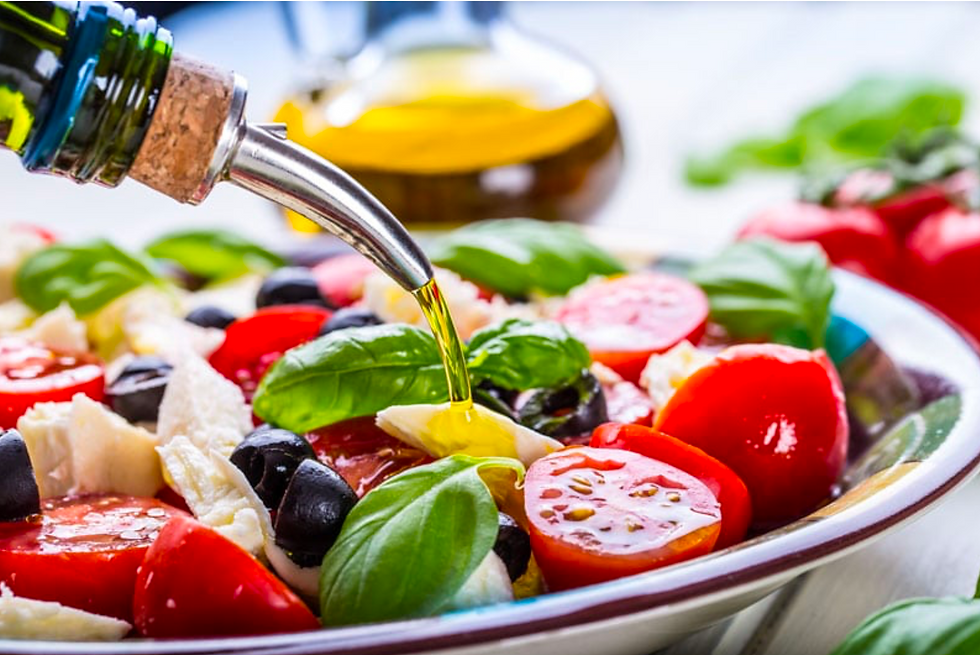The Dishes that Define Uruguay’s Gastronomy
- Andrea Polvere
- Feb 4, 2024
- 4 min read
Introduction
Uruguay can be found nestled between Argentina and Brazil along the southeast coast of South America, an area known as el ‘Cono Sur’ or ‘Southern Cone’.1 Despite being the second smallest country in the continent, Uruguay has developed an illustrious style of cooking and decadent cuisine with a strong attribute for the most natural, fresh ingredients. This unique gastronomy is the direct result of heavy immigration in the late 19th and early 20th century from Mediterranean European countries, such as Italy and Spain. 2,3 Over the years, the fusion of these cultures has evolved to help shape Uruguay’s most cherished dishes and predominant yields from grass-fed beef and dairy products, to fresh produce, to sugary street foods.
Traditional Dishes (4)
Asado (5)
Asado can describe a traditional grilled or barbecued meat dish, or rather the technique of barbecuing. It is made with beef, chicken, lamb, pork, sausages, or offal, also known as organ meat. The cooking process usually takes several hours to ensure a perfectly tender, smoky end product.
Asado is prepared for special occasions with large gatherings, such as reunions or parties. It can be made at outdoor grills called parrillas, which tend to be more up-scale, or at home. Although asado is equally popular in neighboring countries, the Uruguayan method utilizes an open fire with wood, as opposed to the Argentinean method of using coals. This produces a deeper, richer, smoky taste.
Because of the beefs rich flavor, it is enjoyed without heavy sauces or marinades. However, chimichurri sauce or salsa criolla may be served on the side. Asado is typically served with green salads and various vegetables.
Dulce De Leche (6)
Coming from Spanish influence, dulce de leche is a beloved treat made by caramelizing milk with sugar. It may be served warm, which creates a more liquid, pourable consistency, or cool/room temperature, which has a thicker, gooey consistency.
This delectable treat is enjoyed with a number of desserts, and even some breakfast staples, like toast or pancakes. Here are some desserts commonly accompanied with dulce de leche:
Flan
Churros (derived from Spanish influence)
Bolas de fraile (German-inspired doughnut)
Milhojas (sandwiched layers of puff pastry)
Alfajores (shortbread sandwich cookie)
Mate (3,7)
Yerba mate, made from a native evergreen holly tree in South America, is a widely cherished drink enjoyed across the continent. It has a slightly bitter, vegetal taste, and is traditionally prepared by pouring hot water onto dried leaves and twigs into a small cup called a ‘gourd’. The drink is shared amongst friends through a ‘bombilla’, a filtered metal or reed straw.
Mate is enjoyed all times of the day, despite its high caffeine content. Uruguayans can be seen carrying their favorite drink on-the-go in thermos all around. It can even be re-steeped up to ten times before losing flavor. It’s rare for mate to be enjoyed without bizcochos, a Spanish-derived word used to describe a variety of baked goods, and tortas fritas, a fried cake or pie.
It is estimated South Americans drink up to six times as much mate as coffee, and Uruguayans lead the world for most yerba consumed per person per year, with 13.2 to 17.6 pounds! It’s no surprise mate is Uruguay’s national drink!
How to Approach Advising a Uruguayan Client
Uruguayans have prided themselves in their quality beef production and exportation ever since the first introduction of cattle over 400 years ago by the Spaniards.2 It continues to be their largest exporter sector, accounting for 21%, or $2.4 billion, of the country’s total revenue in 2021.8 Uruguay even has the highest cattle-to-person ratio in the world with about four cows for every person!9 For this reason, combined with Uruguayan’s strong sense of individuality to demonstrate they have traditions and practices free from the influence of others, it would be inappropriate to recommend a Uruguayan to decrease their consumption of beef.
A more practical approach for advising a Uruguayan client how to improve their dietary habits may be to focus on decreasing their intake of pastries and baked goods. Better yet– skip out on the fried pastries, and enjoy some of the lush, fresh fruit that grows abundantly all across the country. Another suggestion could be to change preparation methods for certain foods by baking instead of frying.
References:
1. Davis, S. (n.d.). Opinion: Reflecting on the stereotypes surrounding food from non-western cultures. The Evanstonian. Retrieved February 18, 2023, from https://www.evanstonian.net/opinion/2023/01/27/opinion-reflecting-on-the-stereotypes- surrounding-food-from-non-western-cultures/
2. The history of Uruguayan meats. Uruguayan Meats. (n.d.). Retrieved February 18, 2023, from https://uruguayanmeats.uy/history/the-history-of-uruguayan-meats/
3. Uruguayan cuisine. DBpedia. (n.d.). Retrieved February 18, 2023, from https://dbpedia.org/page/Uruguayan_cuisine
4. Bryant, S. (2023, January 6). Incredible Uruguayan food to try on your vacation: Celebrity cruises. Celebrity Current. Retrieved February 18, 2023, from https://www.celebritycruises.com/blog/uruguayan-food#:~:text=The%20meat%20is%20grilled%20over,last%20late%20into%20the%20night
5. Uruguay asado. Explore Uruguay. (n.d.). Retrieved February 18, 2023, from http://www.explore- uruguay.com/uruguay-asado.html#.Y_Ow9OzMLxp
6. Fajardo, M. (2017, September 24). A brief history of dulce de leche. Culture Trip. Retrieved February 18, 2023, from https://theculturetrip.com/south-america/uruguay/articles/a-brief-history-of-dulce-de- leche/
7. Tieso, M. (2019, May 3). The history and origins of Yerba Mate. Matero. Retrieved February 18, 2023, from https://yerbamatero.com/blogs/history/history-origins-yerba-mate
8. (n.d.). Uruguay - market overview. International Trade Administration | Trade.gov. Retrieved February 18, 2023, from https://www.trade.gov/country-commercial-guides/uruguay-market-overview#:~:text=In%20terms%20of%20product%20exports,by%20cellulose%20at%20%241.5%2 0billion
9. Rosen, N. (n.d.). U.S. engagement in Uruguay: The Beef Industry - american.edu. U.S. Engagement in Uruguay: The Beef Industry . Retrieved February 20, 2023, from https://www.american.edu/centers/latin-american-latino-studies/upload/uruguay-beef_case- vignette.pdf



Comments